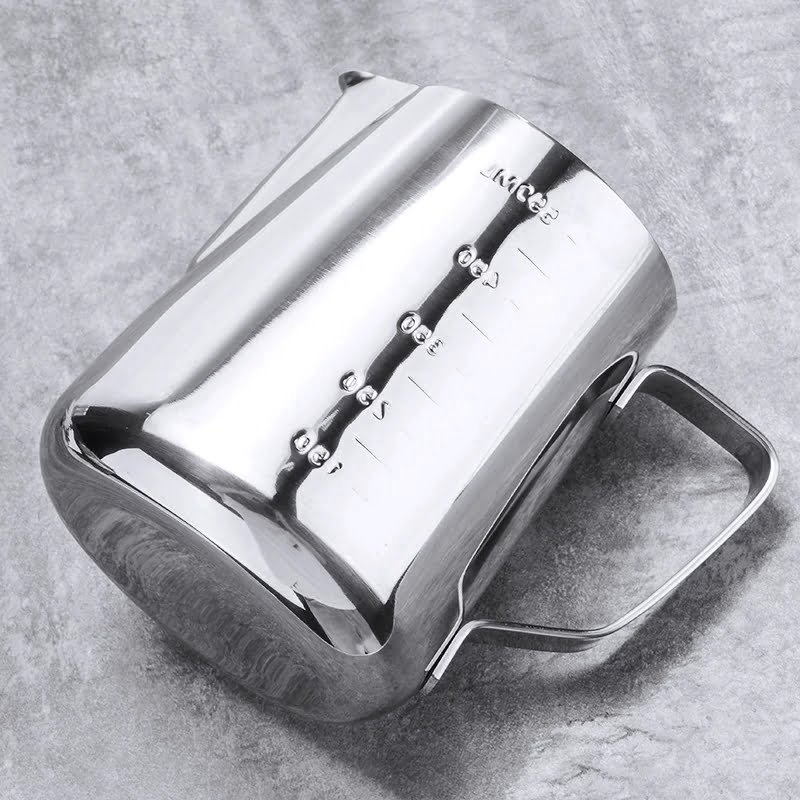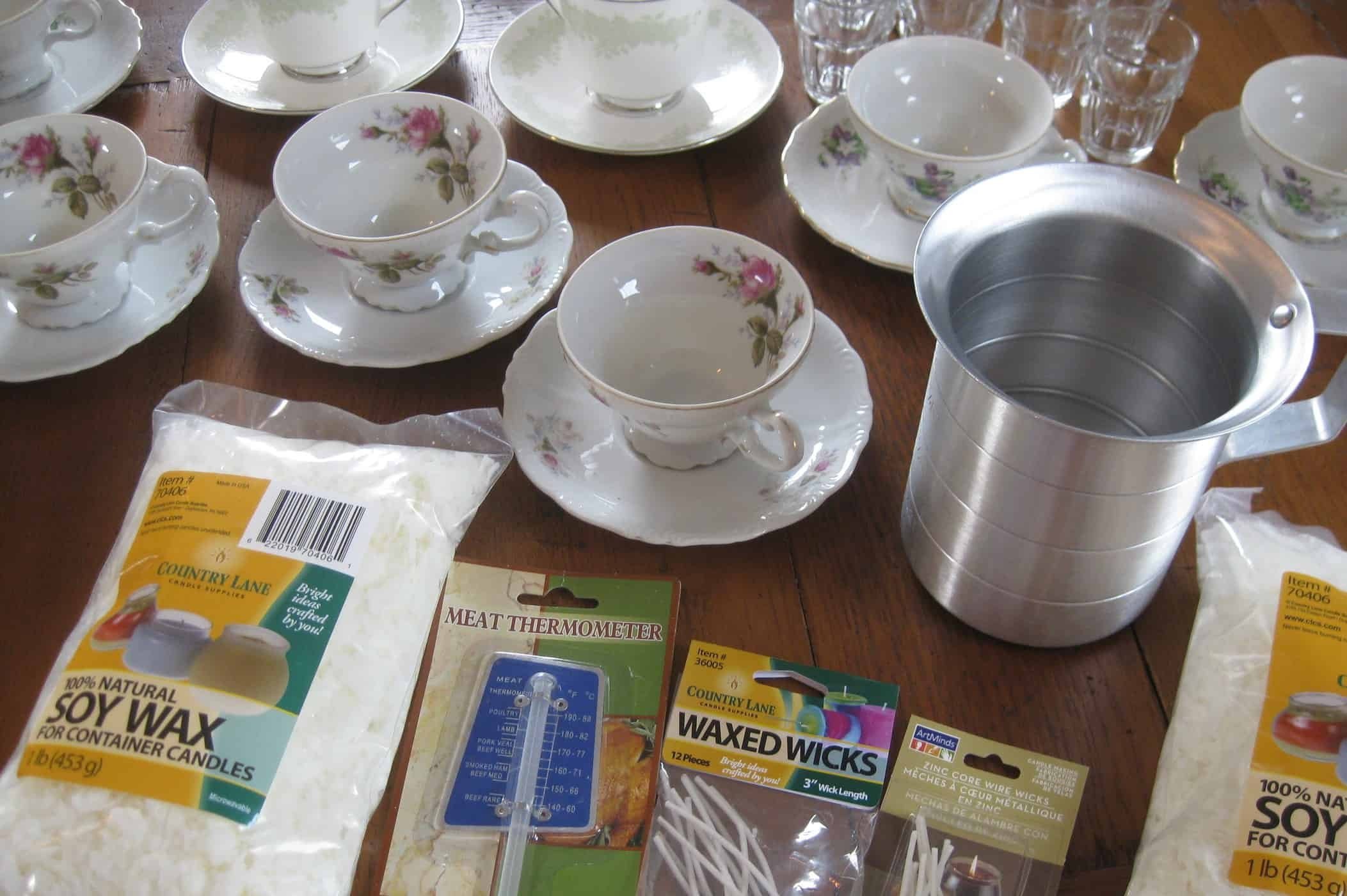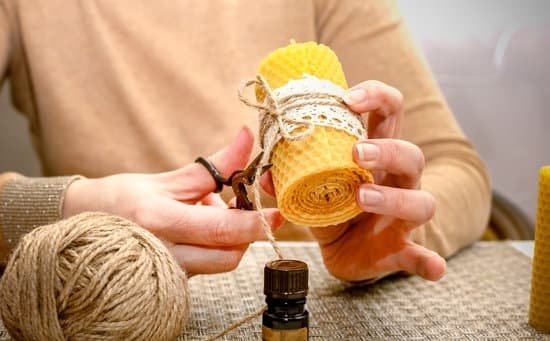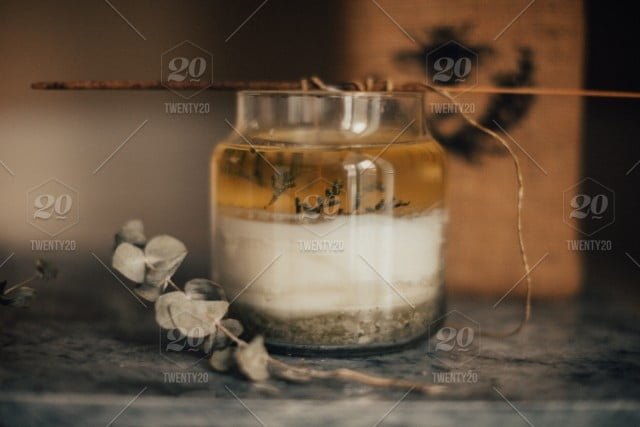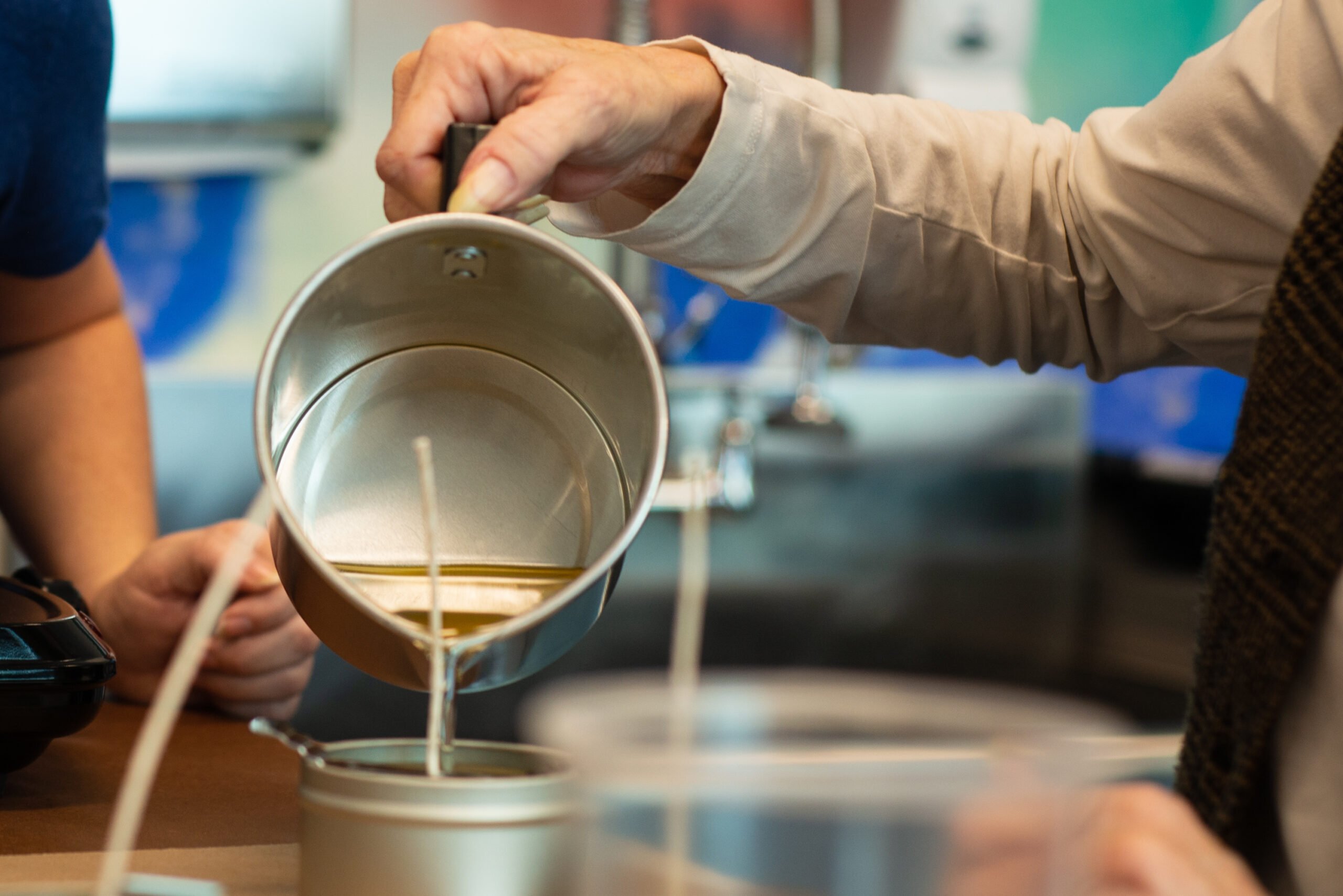Candle making has become an increasingly popular hobby among craft enthusiasts and DIYers alike. The process of creating your own candles allows for creativity, personalization, and relaxation.
However, one question that often arises in candle making discussions is whether or not food coloring can be used to add vibrant hues to the candles. In this article, we will delve into the basics of candle making, explore the role of dyes and colorants in candle making, and examine whether or not food coloring is a suitable option for achieving desired colors in candles.
Before addressing the specific issue of using food coloring in candle making, it’s important to grasp the fundamentals of this beloved craft. The process typically involves melting wax, adding fragrance or essential oils if desired, pouring the melted wax into molds or containers, and allowing them to cool and solidify.
Candles can be made from various types of waxes such as soy, beeswax, or paraffin. With their soft glow and pleasant scents filling a room, homemade candles can create a cozy ambiance or serve as thoughtful gifts.
When it comes to adding color to candles, dyes or colorants play an essential role in achieving vibrant and visually appealing results. These dyes are specifically formulated for candle making and offer a wide range of colors to choose from.
However, some individuals wonder if food coloring could serve as a more cost-effective alternative that is readily available in most kitchens. In order to assess the viability and effectiveness of using food coloring in candle making, it’s necessary to explore its composition and compatibility with different candle materials.
The Role of Dyes and Colorants in Candle Making
When it comes to candle making, dyes and colorants play a crucial role in enhancing the visual appeal of the final product. They are used to impart vibrant colors and create unique designs that can attract attention and complement any decor. In this section, we will explore the purpose of using dyes or colorants in candles, discuss different types available on the market, and highlight factors to consider when choosing them for candle making.
The primary purpose of using dyes or colorants in candles is to add visual interest and appeal. Whether you’re making candles as a hobby or for commercial purposes, the colors you choose can greatly impact the overall aesthetic value of your creations.
Dyes help create consistency, allowing you to produce batches of candles with uniform colors. On the other hand, colorants like pigments or mica powders offer more versatility as they can be used to achieve different effects such as metallic finishes or opaque coloring.
There are various types of dyes available on the market specifically designed for candle making. Some common options include liquid dyes, dye blocks, dye chips, and powder dyes. Liquid dyes are easy to use as they can be directly mixed into melted wax, while dye blocks and chips require melting before being added to the wax. Powder dyes offer flexibility in terms of color intensity and blending options but may require extra care during handling due to their fine particles.
When choosing dyes or colorants for candle making, there are several factors that should be taken into consideration. First and foremost is the compatibility with your chosen wax type. Different waxes such as soy, beeswax, or paraffin may have varying properties that affect how well they accept certain types of dyes or colorants.
It is important to do some research or consult with experienced candle makers to ensure a good match between the dye and wax you intend to use. Additionally, factors like color stability, heat resistance, and lightfastness should also be considered to ensure the longevity and quality of your candles.
In summary, dyes and colorants play a crucial role in candle making by adding visual appeal and enhancing the overall aesthetic value of the final products. Various options are available on the market, each with its own advantages and considerations.
When choosing dyes or colorants, it is important to consider compatibility with your wax type as well as factors like color stability and heat resistance. Careful selection of dyes or colorants can help you achieve vibrant colors and create stunning candles that will delight both yourself and those who enjoy them.
Understanding Food Coloring and its Composition
When it comes to candle making, there are numerous options available for adding color to your creations. One of the common questions that arise is whether or not food coloring can be used in candle making. Understanding the composition of food coloring can shed some light on this topic.
Food coloring is primarily composed of water-based or oil-based dyes, which are created by mixing different pigments and chemicals. Water-based food coloring typically consists of water, glycerin, propylene glycol, and a variety of color additives approved by regulatory bodies for use in food products. Oil-based food coloring, on the other hand, contains different oils such as cottonseed or soybean oil along with various additives and pigments.
One key difference between water-based and oil-based food coloring is their compatibility with candle making materials. Water-based food coloring is generally not recommended for candles as it does not mix well with waxes and may cause issues such as uneven distribution of color or bleeding. In contrast, oil-based food coloring can be mixed with wax more effectively due to its compatibility with the fatty nature of candles.
Although using food coloring in candle making may seem like a convenient option for adding color, there are potential pros and cons to consider. One advantage is that food coloring is readily available in most grocery stores, making it easily accessible for candle makers. Additionally, using food coloring allows you to experiment with a wide range of colors without having to invest in specialized candle dyes or colorants.
However, there are also some drawbacks when using food coloring in candles. It’s important to note that certain colors may fade over time when exposed to heat, UV rays, or other environmental factors commonly associated with burning candles. Additionally, the use of improper ratios or excessive amounts of food coloring might result in poor fragrance throw or interfere with the overall quality of the candle.
Compatibility of Food Coloring with Candle Materials
When it comes to candle making, it is important to consider the compatibility of food coloring with different candle materials. The type of wax used in the candle plays a significant role in how well the food coloring will blend and adhere to the wax.
1. Compatibility with Soy Wax:
Food coloring can be compatible with soy wax, but it may require some experimentation to achieve desired results. Soy wax tends to have a softer texture compared to other waxes, which can affect how well it absorbs color. It is recommended to use oil-based food coloring for soy candles, as water-based food coloring may not blend as effectively.
2. Compatibility with Beeswax:
Beeswax is another popular choice for candle making, known for its natural and pleasant scent. Food coloring can be used with beeswax, but it is essential to choose oil-based food coloring specifically designed for use in waxes. This ensures that the colorant is able to bind properly with the beeswax without causing any adverse effects.
3. Compatibility with Paraffin Wax:
Paraffin wax is a common choice for many candle makers due to its versatility and accessibility. Food coloring can be used in paraffin wax, and both oil-based and water-based options can work well depending on personal preference. However, it is important to note that using a large amount of water-based food coloring may affect the consistency and performance of the paraffin wax.
It is always recommended to test food coloring in small batches before making larger quantities of colored candles. This allows you to assess compatibility and make any necessary adjustments along the way. Remember that different brands or types of food coloring may behave differently when mixed into various waxes, so it’s crucial to experiment until you find the right combination.
While using food coloring in candle making can yield beautiful results, there are some potential adverse effects to consider. Food coloring may not withstand high temperatures as well as other candle dyes or colorants, which could result in fading or discoloration over time. Additionally, some food colorings may have a scent that could interfere with the desired fragrance of the candle. If these factors are a concern, exploring alternative colorants specifically designed for candles may be a better option.
Testing Food Coloring
- Use small amounts of wax and food coloring to mix and test dye compatibility.
- Observe how well the color blends into the wax and if it maintains its vibrancy.
- Monitor any potential changes in texture or consistency of the wax.
As with any candle making process, safety should always be a top priority. When working with food coloring, it is advisable to wear gloves to protect your hands from staining. It is also important to work in a well-ventilated area as some food coloring may release fumes when heated. Taking these safety precautions can ensure a smooth and enjoyable candle making experience.
In summary, while food coloring can be used in candle making, it is important to consider the compatibility with different candle materials such as soy wax, beeswax, and paraffin wax. Test smaller batches before committing to larger quantities and be aware of potential adverse effects such as fading or interference with fragrances. By following these tips and techniques, you will be better equipped to incorporate food coloring into your candle making endeavors successfully.
Achieving Desired Colors with Food Coloring
When it comes to candle making, one of the key elements that can enhance the overall aesthetics is color. Whether you prefer vibrant, bold hues or soft, pastel shades, achieving the desired colors in your candles can be an enjoyable and creative process. Food coloring is a popular choice for adding color to candles due to its wide availability and variety of colors. In this section, we will explore tips and techniques for achieving vibrant colors with food coloring.
Understanding color blending and ratios is essential when using food coloring in candle making. Just like mixing paint or dye, combining different colors of food coloring can result in unique shades and tones. Start by experimenting with small amounts to understand how each color interacts with one another. For example, adding a drop of red food coloring to yellow can create a beautiful orange hue. Similarly, mixing blue with red can produce a rich purple shade.
It is important to note that food coloring may appear differently in wax compared to its appearance in water or food items. Some colors may become lighter or darker when added to certain waxes, so it’s best to test different combinations and ratios before making larger batches.
Additionally, consider the transparency of your candle wax as it may affect the final color outcome. For example, using white candle wax will result in more vibrant colors compared to using colored or translucent waxes.
| Desired Color | Food Coloring Combinations |
|---|---|
| Pink | A few drops of red mixed with white |
| Green | A mix of yellow and blue |
| Purple | Equal parts of red and blue |
| Turquoise | A blend of blue and green |
| Orange | A combination of yellow and red |
Remember to start with a small amount of food coloring and gradually increase or adjust as needed. Keep in mind that different brands or types of food coloring may produce slightly different results, so it’s always a good idea to keep notes of your experiments.
While food coloring can be a convenient option for achieving desired colors in candle making, it is important to remember that not all colors are suitable for all types of wax. Some food colorings may not disperse evenly or may cause discoloration in certain waxes. It is recommended to test food coloring in small batches before committing to larger quantities, especially when using natural waxes like soy or beeswax.
Safety Considerations and Best Practices
When using food coloring in candle making, it is important to prioritize safety to ensure a positive and worry-free experience. While food coloring may seem harmless, there are certain considerations and best practices that should be followed to minimize any potential risks.
Firstly, it is recommended to always wear gloves when handling food coloring or any other colorants. This not only protects your skin from potential irritation but also prevents the transfer of dyes onto other surfaces or materials. Additionally, it is essential to work in a well-ventilated area to avoid inhaling any fumes or particles released during the candle-making process.
Furthermore, it is worth noting that not all food colorings are created equal. Some may contain additives or ingredients that are not suitable for candle making. To ensure the safety of your candles and their burn quality, opt for high-quality, professional-grade food coloring specifically designed for crafts and candle making. These are often free of additives such as sugar or starch that can interfere with the performance of the candles.
While food coloring can be used in candles, exploring alternative colorants might offer greater peace of mind when it comes to safety. Candle-specific dyes, liquid dyes formulated for crafts, or mica powders are alternative options that have been developed specifically for use in candle making. These colorants often provide more intense colors and better stability compared to food coloring. They also have a lower risk of bleeding or discoloration over time.
Troubleshooting Common Issues with Food Coloring
Addressing Color Bleeding
One common issue that can arise when using food coloring in candle making is color bleeding. This occurs when the color disperses or spreads throughout the candle, resulting in a muddled or uneven appearance. To prevent color bleeding, it is important to choose a food coloring that is labeled as non-bleeding or suitable for use in wax.
Additionally, using liquid food coloring rather than gel-based ones can help reduce the risk of color bleeding. It is also essential to ensure that the dye is thoroughly mixed into the melted wax before pouring it into the mold or container.
If you’re experiencing color bleeding despite taking precautions, there are a few troubleshooting steps you can try. Firstly, you can try reducing the concentration of food coloring used in your candles by diluting it with additional melted wax. Another option is to allow the candle to cool partially before adding the food coloring mix into it.
This technique allows some of the wax to solidify and prevents excessive dispersion of the colors. Ultimately, experimenting with different techniques and ratios may be necessary to find what works best for your specific candle-making process.
Finding Solutions for Uneven Distribution
Another challenge when using food coloring in candle making is achieving an even distribution of color throughout the candle. Uneven distribution can result in patches or streaks of lighter or darker shades within the finished product. To minimize this issue, make sure to mix your food coloring thoroughly with melted wax before pouring it into molds or containers.
One technique for achieving a more uniform distribution is to heat your colored wax mixture at a lower temperature before pouring it into your candles. This slower cooling process allows more time for pigments to distribute evenly throughout the wax and reduces the likelihood of streaks or inconsistent colors.
If you still encounter issues with uneven distribution after trying these techniques, consider using additives specifically designed to promote better color dispersion within candles. These may include solutions that enhance the compatibility between the wax and the dye, resulting in a more consistent color throughout the candle.
Preventing Discoloration
Discoloration can be an unexpected result when using food coloring in candle making. Over time, some food colorings may fade or change hue due to exposure to light, heat, or the burning process. To minimize discoloration, consider using stabilizers or UV inhibitors specifically designed for use with candle dyes or pigments. These additives can help preserve the vibrant colors of your candles for longer periods.
Additionally, storing finished candles in a cool, dark place can help slow down discoloration caused by exposure to light and heat. Consider packaging your candles in opaque containers or wrapping them in tissue paper to further protect them from external factors that may contribute to discoloration.
In Conclusion,
While food coloring can be a convenient option for adding color to homemade candles, it is important to understand and address common issues that may arise. By troubleshooting problems such as color bleeding, uneven distribution, and discoloration, you can improve your chances of achieving vibrant and visually appealing results.
However, if you find that these challenges persist or become too difficult to overcome, there are alternative colorants available specifically formulated for candle making that may offer more consistent and reliable results. Ultimately, experimentation and careful observation will help you determine whether food coloring is suitable for your specific candle-making endeavors.
Exploring Alternative Colorants for Candle Making
Introducing Alternative Colorants
While food coloring can be a convenient option for adding color to your candles, it is not the only choice available. Many candle makers prefer to use alternative colorants specifically designed for candle making. These alternatives include candle dyes, liquid dyes, and mica powders. Each of these options comes with its own set of advantages and considerations.
Candle dyes are specially formulated dyes that are designed to work effectively with candle waxes. They are typically available in either powdered or liquid form and offer a wide range of colors. Candle dyes are highly concentrated and require only a small amount to achieve vibrant colors in your candles. They also disperse evenly throughout the wax, resulting in consistent coloring throughout the candle.
Liquid dyes, on the other hand, come in pre-dissolved form and are ready to be added directly to the melted wax. These dyes are usually highly concentrated as well, requiring only a few drops to achieve desired shades. Liquid dyes offer ease of use and convenience, particularly for beginners or those who prefer a mess-free option.
Mica powders are natural mineral pigments that can add shimmer and shine to your candles. They come in various shades and can be mixed together to create custom colors. Mica powders can be added directly to the melted wax or used as a surface decoration by dusting it onto the cooled surface of the candle. They provide a unique aesthetic effect and can elevate the visual appeal of your candles.
Comparing Pros and Cons
While food coloring may seem like a cost-effective option, exploring alternative colorants can offer several benefits. Candle-specific colorants have been specifically developed for use in candles, ensuring better compatibility with different waxes and minimizing any potential adverse effects on burning performance.
One advantage of using alternative colorants is their stability over time. Candle dyes and liquid dyes are generally more resistant to fading or discoloration compared to food coloring. This means that your candles will maintain their vibrant hues for a longer period.
Another consideration is how the colorants interact with the candle wax. Alternative colorants, such as candle dyes and liquid dyes, are typically designed to mix well with wax, resulting in even distribution and consistent colors throughout the candle. On the other hand, food coloring may not blend as seamlessly with the wax and can sometimes lead to uneven distribution or separation.
Where to Find Alternative Colorants
If you have decided to explore alternative colorants for your candle making projects, various suppliers offer a wide range of choices. Online stores that specialize in candle making supplies are a great place to start. Look for suppliers that specifically state their colorants are suitable for use in candles and provide a wide range of options.
Additionally, local craft stores may stock candle-making supplies, including alternative colorants. Some hobby stores or specialty shops dedicated to soapmaking or candlemaking may carry specific brands of colorants as well. Don’t hesitate to reach out to fellow candle makers for recommendations on where they source their alternative colorants.
Conclusion
In conclusion, the question of whether or not to use food coloring in candle making ultimately comes down to personal preference and careful consideration. Throughout this article, we have explored the role of dyes and colorants in candle making, understanding the composition and compatibility of food coloring with different candle materials, achieving desired colors, safety considerations and best practices, troubleshooting common issues, and exploring alternative colorants.
While food coloring may offer a convenient option for adding color to candles due to its easy accessibility and wide range of shades available, there are potential drawbacks to consider. Food coloring is primarily water-based and may not mix well with the waxes typically used in candle making. This can result in uneven distribution of color or even bleeding.
It is recommended to conduct small-scale tests using food coloring before incorporating it into larger batches. This allows you to assess compatibility with your chosen wax and ensure that the color remains stable throughout the burning process. Additionally, always exercise caution when working with any type of dye or colorant by following safety measures such as wearing gloves and working in a well-ventilated area.
Ultimately, if you decide against using food coloring in your candle making endeavors, there are alternative colorants available such as specialized candle dyes, liquid dyes, or mica powders. These alternatives are specifically formulated for use in candles and may provide more consistent and vibrant results. It is important to weigh the pros and cons of each option based on your specific needs and preferences.
Overall, while food coloring can be used in candle making with certain precautions, it is advisable to explore other colorant options that are better suited for this craft. By being informed about the potential advantages and disadvantages associated with different types of dyes or colorants, you can make an informed decision that aligns with your desired outcomes for your candles.
Frequently Asked Questions
What can you use to color homemade candles?
When it comes to coloring homemade candles, there are several options available. One commonly used method is to use liquid dyes specifically designed for candle making. These liquid dyes are specially formulated to dissolve easily in the wax, resulting in vibrant and consistent colors.
Another option is to use powdered dyes or pigments, which can be mixed into the melted wax before pouring it into the molds. These powdered colors provide a wide range of shades and allow for more customization in creating unique candle designs.
Can you use food coloring gel to color candles?
While food coloring gel may have its uses in various culinary applications, it is generally not recommended for coloring candles. Food coloring gels are typically water-based, and since wax and water don’t mix well, adding food coloring gel directly to your candle wax can cause undesirable effects such as separation or clumping.
Furthermore, water-based colorants may alter the consistency of the finished wax, affecting factors like burn time and fragrance throw. It’s best to opt for colorants specifically formulated for candle making to achieve optimal results.
What coloring is best for candle making?
The best coloring option for candle making largely depends on personal preference and the desired outcome. Liquid dyes designed specifically for candles are often a popular choice due to their ease of use and ability to create vibrant hues when properly incorporated into the melted wax. They offer consistency and reliability in achieving uniform colors throughout your candles.
Some candle makers prefer using dye chips or blocks made from concentrated colorant that can be added directly to the melted wax, allowing for precise control over color intensity by adjusting the amount used. Ultimately, experimentation with different types of colorants will help you discover what works best based on your specific needs and creative vision as a candle maker.

Welcome to my candle making blog! In this blog, I will be sharing my tips and tricks for making candles. I will also be sharing some of my favorite recipes.

